Odds are you’ve seen the letters “NFT” floating around in financial and tech news for the past few months. And if you’re like me you’re totally confused about all this NFT and crypto art stuff.
So I reached out to my smartest blogger friend, Jesse from Best Interest, who has a gift for breaking down complex topics and explaining them in layman’s terms. Jesse explains the NFT meaning in a fun and easy way below … thanks, Jesse!
*****
What Does NFT Mean?
NFT stands for non fungible token.
Non-fungible means unique, one-of-a-kind, not replaceable.
Example: U.S. dollars are fungible. One dollar can easily replace another dollar. You and I could trade an old $10 bill for a new $10 and we’d both feel fine about it. That’s fungibility.
So, a non-fungible item has unique properties such that it can’t be duplicated, replicated, etc.
And the “token” part of NFT is a textbook definition. A token is one thing that represents another thing — a fact, quality, feeling, etc. An arcade token, for example, represents money inside the arcade world. In the case of NFTs, the token is a representation of a digital asset.
Perhaps that digital asset is a song. The band Kings of Leon used NFTs to limit the release of their most recent album. They minted a limited number of NFTs, and you need to own one of those NFTs to gain access to their songs.
The NBA is turning short videos, or GIFs, into NFTs. You can be the unique owner of a specific Lebron James dunk video highlight.
And the digital art world is trading in NFTs, too. Last month, an NFT for a piece of digital art sold for … $69 million dollars!
How Do NFTs Involve Crypto?
NFTs are intrinsically tied to cryptocurrency. Since NFTs represent unique ownership of a digital asset, one must ask, “how do we know for sure that a specific person owns a specific NFT?”
The answer: the blockchain.
Blockchains supported by cryptography provide the security needed to verify the unique ownership of a digital item. (Here’s a quick primer from the Best Interest about the basics of the blockchain technology.)
NFTs are currently supported by the Ethereum blockchain and the Flow blockchain. They are not supported by the most well-known blockchain — the Bitcoin blockchain.
How Do NFTs Work?
To explain how NFTs work, let’s start with a piece of media. Perhaps that media is a well-written blog post (heyo!) or a picture of a dog. For now, let’s go with the dog. I want to turn a dog picture into an NFT.
(It’s Sadie again! You might remember her from A Dog’s Guide to Personal Finance)
I will upload my dog picture to an NFT marketplace. These auction marketplaces — examples include Rarible, Nifty Gateway and OpenSea — have software that creates a small data packet, known as a hash, that is uniquely tied to that picture.
What is contained in the hash? Very little. Typical NFT hashes only contain links to the file’s actual location elsewhere on the Internet. We’ll come back to this fact later.
The auction market then uploads that hash to a blockchain ledger. Once on the blockchain, forever on the blockchain. The blockchain — essentially a fancy spreadsheet — now has a unique entry that states, “This hash points to this dog picture, and Jesse owns this hash.”
I can choose to sell this NFT to another person (and owners of other tokens can do the same). Thus, blockchain will be updated to say, “Jesse once owned this dog picture, but now Joel owns it.”
That’s a very quick and quite dirty (just like a dog, no?) primer of how NFTs work. Feel free to ask questions in the comments at the end of the article!
NFTs Enable New Creator Economies
NFTs are being hailed as a potential path to a new creator economy.
They enable creators — artists, musicians, bloggers?! — to shop their creative digital works directly to a market of potential consumers. Payment is clean and secure via the blockchain.
Even better, NFTs enable a version of “royalties.” Let’s go back to the dog picture NFT to explain this royalty idea.
When Jesse mints that dog picture NFT, he could choose to add a percentage royalty onto all future sales. As the “original” artist, Jesse might take a 5% commission each time the NFT changes hands. If the NFT market explodes or certain works catch the cultural zeitgeist — people do like dog pics, after all — the artist will continue to be paid off.
Imagine if Picasso or Van Gogh (or their estates) were still collecting royalties each time one of their works were bought and sold!
Problems With NFTs
NFTs have some philosophical issues, logistical issues, and plain common sense issues. You’ve probably already asked yourself some of these questions we’re about to address.
1. Can’t Links Die?
NFTs don’t store digital media. They just store a link to digital media. Doesn’t that present a big problem? What if I buy an NFT, but the original media or underlying asset gets removed from wherever it lives on the Internet?
Yes, links can die. Webmasters can choose to remove digital artwork from the Internet.
The dog picture is not stored on the blockchain. The dog picture is not eternal. Only the link to the dog picture is an eternal part of the NFT.
So the NFT that points to this dog picture becomes pointless if this dog picture gets taken down from the Internet.
Some technologists are working on this problem, but so far there isn’t a long-term solution.
2. Can’t Digital Media Be Copied?
“So I own this dog picture…but anyone can look at it, copy it, or use it on their blog?!”
Yes, digital media can be copied infinitely. NFTs do not make you the sole owner of the specific digital asset. And yes, bloggers can come in and use your dog pictures.
But is that different from traditional art or collectible items? I say no, there’s not a big problem here. My local Memorial Art Gallery owns a beautiful Parrish, and yet I can use the image here on Budgets Are Sexy. See?
P.S. This painting is about 10 feet tall, and the blue is so blue that it has its own name .. .Parrish Blue
A copied image of an original piece does not take away from the original’s glory. In fact, many art experts maintain that references to paintings serve to enhance the original’s glory.
Would people care to go see the Statue of David if everyone weren’t always talking about it? Heck no! The cultural popularity — including reproductions and images of the original — only serve to enhance our desire to see the original in all its glory.
3. What About NFT Copies and Copyrights?
NFTs have complex relationships with copying and copyrights.
Owning an NFT is not the same as owning copyright on the original media. It’s more similar to owning the first copy of said media. It’s like owning the first copy of a vinyl record, not the license to stamp more copies of that vinyl record.
An artist can sell an NFT of their art and still retain copyright on the artwork. The artist can even mint additional NFTs of that art. These can be considered certified copies, just as if the item has a “limited release.”
The buyer of an NFT doesn’t gain exclusive access to the media or original files. After all, the media is still out there on the Internet. This can be considered owning a precious art piece but hanging it in a museum (not at your house).
4. How Do Creators Get Credit for NFTs?
One clear smudge — in my opinion — on the reputation of NFTs is that anyone can turn any file into an NFT. Some schmuck can steal another person’s work, mint it into an NFT, sell it on an NFT marketplace and profit from that theft.
There have already been numerous publicized cases where NFTs have been created without the underlying media’s creator’s permission.
In the “real” world, we have copyright laws and courts to handle these kinds of conflicts. There’s a central authority that can settle such disputes. But who is the arbiter of the blockchain? After all, the blockchain is designed to be decentralized without a central authority.
The answer — at least so far — is that nobody is there to save creators whose work is stolen. The blockchain has been altered and eternalized to say, “This person [who is actually a thief] owns this dog picture.” And due to the nature of blockchains, that lie cannot be undone.
The only hope is that the market chooses to “punish” the thief by not buying the stolen work and that the original creator mints their own NFT pointing to their own copy of the work, thus setting the NFT world straight.
What a headache!
5. NFTs Are Power Hogs
Most crypto items are energy hogs, and here’s why.
Cryptocurrencies use complex cryptography to provide security to their blockchains. That cryptography—a.k.a. complex puzzles—requires powerful computers to solve. And those computers use lots of power!
- Pro tip: Here’s more on crypto verification and mining
NFTs are no different.
For example, a single transaction on the Ethereum blockchain requires roughly 10,000 times the resources as a single email, and roughly 1,000 the resources as watching an hour of Netflix (source).
But NFTs are worse than average transactions, because a single NFT requires minting, bids at auction (and cancelled bids), sale, and transfer of ownership. Combining all these energy-intensive blockchain actions:
“a single NFT’s footprint is equivalent to a EU resident’s total electric power consumption for more than a month, with emissions equivalent to driving for 1000 kilometers, or flying for 2 hours.”
Is owning a token of a dog picture worth that much? Or are we going to bake our planet alive to exchange animated cat GIFs?
Nyan Cat – a pixelated cat with a Pop-Tart body and a rainbow contrail. Cost? $600,000 […vomits in rainbow]
Why Would Anyone Buy an NFT?
Okay, so given all that, why are investors buying NFTs? Simple: Humans like to collect stuff. We like to own stuff. And we like to be part of groups.
For some people, it’s all about status. Digital artwork NFTs remind me of a real-life art collection.
I could frame a Monet poster for $30, but a real Monet might cost $10 million. Why would I pay $10 million when I could pay $30?
The reason some people pay a premium for the original is that they want unique ownership. More specifically, they want the status that comes along with unique ownership. The same goes for sports memorabilia and old stamps, and first edition Magic: The Gathering cards.
Copies do not scratch the same itch as original ownership.
What Is the NFT Market?
From an economic point of view, the NFT market has a lot in common with other collectors’ markets.
The NFT market is mostly auction-based. Single NFTs are sold with many potential buyers offering competitive bids. Some of these auctions have occurred in person (e.g. at Christie’s) and some auctions are 100% online.
And like other collectors’ markets, the NFT market rises and falls based purely on extrinsic demand. There is no intrinsic growth in NFTs (unlike, for example, stocks). The same NFT that sells for $1 million today might sell for $10 million another year. The NFT won’t change over that time — only the market’s demand will change.
This is exactly how the collectible art market works.
Pick your favorite Monet or Rothko or Pollack. The art piece itself hasn’t changed since it was created. But that artwork has been bought and sold at various prices over time.
Why would anyone buy NFT art? Some people are looking for a quick buck, hoping to ride a wave of greater fools. But others are genuinely interested in being a collector, just like a kid collecting a baseball trading card. Others are interested in status, hoping to impress their friends (the Joneses?!) with their shiny, new non fungible token dog picture.
What Are The Well-Known NFTs?
We are in the nascent days of the NFT ecosystem. Yet there are already famous examples of NFTs.
NBA Top Shots NFTs
The first mainstream NFT were NBA Top Shots. Top Shots are NFTs that point to short videos, or GIFs, of National Basketball Association (NBA) highlights.
For example, you could be the owner of a 3-second clip of Lebron James crossing over his defender and throwing down a massive dunk. That exact NFT sold in March 2021 for $200k.
Or you could watch the same exact video on YouTube for free.
Crazy? Quite possibly.
But remember, you can also look at the Mona Lisa for free on the Internet. But what would collectors pay to hang the original Mona Lisa in their living room? It’s priceless.
NFT bulls (Bulls?!) are making the same kind of bets on their NFT media. They can brag about owning a Lebron James GIF. Or perhaps they think the crypto art market will grow and they can resell the GIF later.
Beeple’s First 5000 Days
A digital artist named Beeple (a.k.a. Mike Winkelman) has created a piece of digital artwork every day for the past 14 years.
The art is…quirky. :)
Buzz! Buzz…? (credit: Beeple)
In March 2021, Christie’s auction house sold an NFT of Beeple’s work. It was a collage of Beeple’s first 5,000 pieces of daily work.
The NFT for Beeple’s opus sold for … $69 million.
That’s right. A collage of in-utero Buzz Lightyear and Gaea Elon Musk and octopus Jeff Bezos — which is not even a physical collage! — sold for $69 million.
I wonder if Beeple could make a piece called “Budgets are $exy?” On second thought … maybe not.
Budgets are…?
Jack Dorsey’s First Tweet
Jack Dorsey created Twitter in 2006. So what could be more iconic than an NFT of Jack’s very first Tweet?
Jack’s first Tweet (Source: Twitter)
You can see that Tweet for yourself. It’s right here. Or, I could just let you know that it says, “just setting up my twttr”
Alternatively, you could have bought the NFT of Jack’s first Tweet for $3 million.
I know, I know. Pictures and videos and songs kinda make sense as NFTs. But text? It’s so easy to copy text. Who’s actually paying millions of dollars for “ownership” of a Tweet?
The Future of NFTs
NFTs have been referred to as “digital Beanie Babies,” and for a good reason. There is no intrinsic value to the layperson, and the market appears to be built upon an unstable foundation of greater fools.
But, perhaps, there are some long-term positive cases for NFTs. We can all agree (I think?) that the Internet is here to stay. More and more creative work will continue to occur online. Surely NFTs can serve a purpose for that market?
What do you Sexy people think about NFTs? Ready to mint your dog pics into eternal line items on the blockchain? Or does this whole NFT thing still make your head spin?
*****
This was a guest post written by Jesse from The Best Interest blog. Jesse’s a really smart dude and has a gift for breaking down complex topics into terms regular humans can actually understand! If you liked this post, go check out his blog, where he writes weekly.
Also, I was lucky enough to be a guest on Jesse’s new podcast — check out Episode 7 of The Best Interest Podcast!
Have a great week!
Joel
Get blog posts automatically emailed to you!


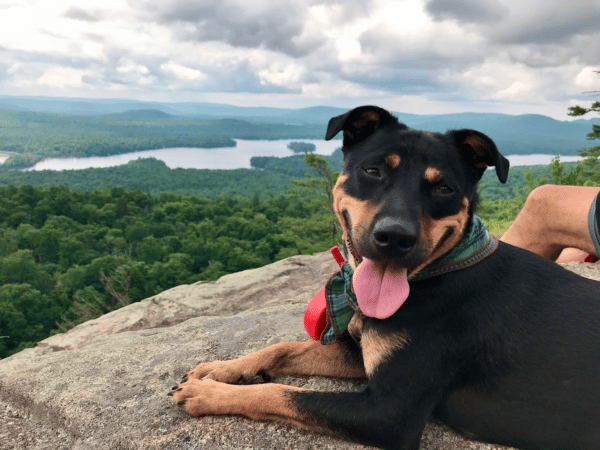

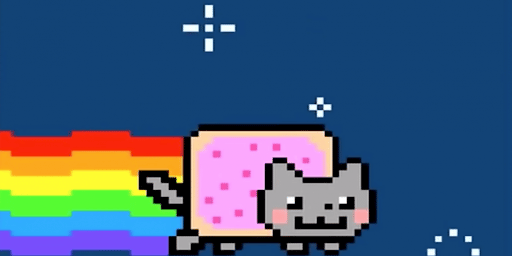
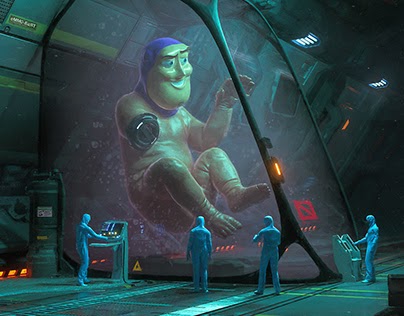


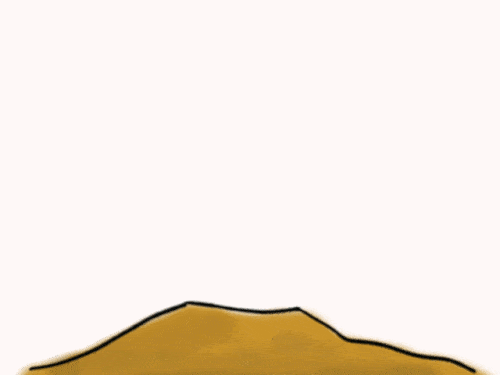

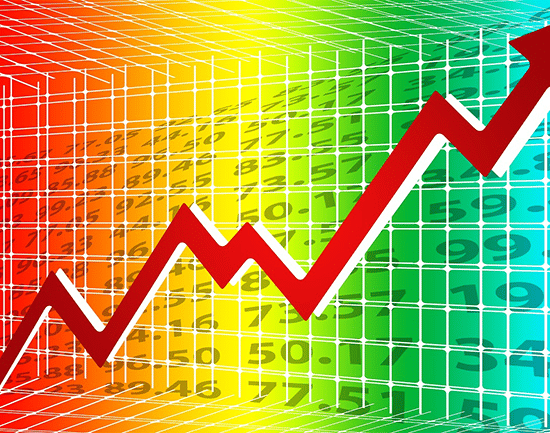
Jesse and Joel,
I really enjoyed reading this breakdown of NFTs – a subject which I, myself, am not very familiar with yet. To be honest, when I first heard about NFTs and how much they were being sold for, I was bewildered… and I didn’t really understand the value in buying NFTs… but it makes sense now that I read your part about why would someone want to own an original Monet piece vs. owning an original NFT (thank you for breaking it down!).
It is concerning though to hear about some of the downsides… like the links dying… that’s a bit worrisome especially seeing that the owner of the links can remove them at any point.
Thanks again!
Cheers,
Fiona
Hey Fiona! Thanks a ton for reading!
Re: your first point…don’t worry. I am still bewildered myself by much of it. I can’t say I subscribe to the psychology of paying that much. I just claim to *sort of* understand it :-)
And I agree with you that the downsides are many. Technologists tend to be optimists, but there are some real negatives to consider here.
Talk soon,
Jesse
I had started to see NFT around, thanks for explaining! I’m in no rush to do anything blockchain. But it is good to be informed.
Thanks for reading, Liz!
-Jesse
Have you heard of the wayback machine? Not a major solution, simply an aside.
http://archive.org
Seriously, check it out. How comprehensive can it be you ask? I once ran a small website in conjunction with my work for a non-profit I joined. This website died when geocities.com died (who remembers that, right???) I can still find my articles there. It did not store the associated images, however. That may have changed over time. The ability to get back my articles themselves so I could use them elsewhere was priceless.
I immediately thought of this site when the notion of a dead link occurred. Since the archive holds, and delineates, many more TYPES of data from the web, it might now hold that image that theoretically will have disappeared.
Oooo good point, SL! I hadn’t thought of that. Perhaps a more comprehensive version of the Wayback machine might solve this ‘dead link’ issue.
Thanks for this layman’s breakdown of NFT. The bottom-line for me, I will still stick to what I know and leave NFT to the experts. Like Warren Buffet said “invest in what you know…and nothing more..”.
Yes, Julius! Follow Warren’s wise words.
I know enough to write this article, and yet don’t feel like I know enough to confidently “invest” in them.
Thanks for commenting!
-Jesse
I’m with you Julius! Even after all this research and whatnot, I still don’t understand how this is a solid investment. I’ll stick with what I know!
I am all for the blockchain and the distributed internet that we’ll be seeing more of in the next 5-10 years, but NFTs I just don’t get the appeal.
I hear ya, AR! Give me a year, and *maybe* I’ll start to see the light enough to consider purchasing an NFT. But right now? I can’t convince myself it’s even close to a true investment.
Good to see you here :)
-Jesse
It’s pretty amazing just how much things change so quickly. It’s not even about cryptocurrencies anymore, it’s about a derivative of cryptocurrencies. Can’t imagine what the future will look like in the next 5 – 10 years out, too.
Mars might have their own stock exchange by then?
So if I understood it correctly, I can snap a picture and upload it say OpenSea and start selling it as a NFT.
If it is correct, how do I sell it and get paid?
Thank you.
-G
Hey G,
That’s basically correct.
OpenSea is a marketplace with sellers (like you) and buyers.
Your picture would need to be compelling enough such that a buyer would want to pay money to own it. Your transaction would occur on the Ethereum blockchain, i.e. you’d be paid in Ethereum cryptocurrency.
Hope that helps and thank you for reading!
Jesse
Good article. I keep seeing NFT in the financial news and this is a good summary.
It just seems like a scam to me all the way around!! LOL
NFT’s are the most bizarre concept for me. It seems like digital beanie babies where you can replicate endlessly but add a NFT “#536” to it.
Big money at stake for these too, but I think we are all going to look back at these 5 years from now and go “WTH were we thinking?”
Hey Ryan! Yeah, that would not surprise me at all.
I know some really smart people see potential here. But plenty of really smart people also think they’re complete B.S!!!
Only time will tell. Thanks for reading!